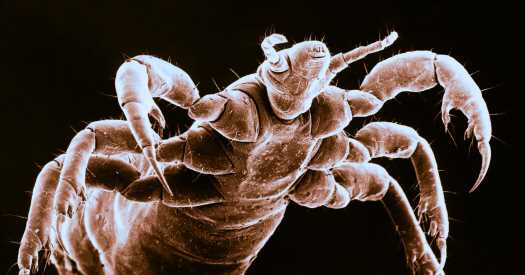In a way, nausea is our trusty personal bodyguard.
Feeling nauseated is widely accepted to be an evolutionary defense measure that protects people from pathogens and parasites. The urge to gag or vomit is “well-suited” to defend ourselves against things we swallow that might contain pathogens, according to Tom Kupfer, a psychological scientist at Nottingham Trent University in England. But vomiting is somewhat futile against a tick, an ectoparasite that latches on to skin, not stomachs.
In an experiment that produced both stomach churning and skin crawling sensations — I can confirm these and some other physiological responses firsthand — Dr. Kupfer and Daniel Fessler, an evolutionary anthropologist from the University of California, Los Angeles, argue in a paper published on Wednesday in the journal Proceedings of the Royal Society B that humans have evolved to defend themselves against ectoparasites through a skin response that elicits scratching.
Although some outside experts say more research is needed, the findings align with some understandings of the evolution of disgust.
“It makes sense to have developed adaptive defensive strategies against the ‘nasty’ ones,” Cécile Sarabian, a cognitive ecologist studying animal disgust at the Kyoto University Primate Research Institute in Japan, wrote in an email.
The disgusting investigation began in 2017 on the grounds of Chicheley Hall in Buckinghamshire, England. Here, Dr. Kupfer was presenting findings to colleagues on trypophobia, the aversion to clustered holes experienced by some people. His data showed that participants with trypophobia often reacted to holey images with the urge to itch or scratch, sometimes to the point of bleeding. Dr. Kupfer suggested that trypophobia might not represent fear, but rather a disgust reaction to signs of parasites or infectious diseases, which can both result in clusters of lesions or pustules.
Dr. Kupfer’s presentation included images that typically set off trypophobic reactions, like lotus seed pods or foam bubbles. At one point during the presentation, a distressed researcher in the front row began shouting for Dr. Kupfer to take an image down.
When one hole closes, another opens. Dr. Fessler approached Dr. Kupfer after the presentation and the two researchers began talking about how the human body might have two types of defensive responses in reaction to certain threats. If nausea and vomiting protect against ingesting dangerous microbes, scratching might protect against ectoparasites. They then began working on a review paper that was published in 2018.
For the new paper, Dr. Kupfer and Dr. Fessler developed a study where they showed people a series of 90-second videos — a suggestive medley of pathogens and ectoparasites — and asked the participants about their emotional and physical response.
Selecting the videos was an art. “We didn’t want people just to say, ‘It’s disgusting,’” Dr. Kupfer said. “We wanted the physiological sensations that accompany the response: nausea, gagging, itching and scratching.”
So Dr. Kupfer along with Sonia Alas and Tiffany Hwang, then undergraduate students at U.C.L.A., pored through YouTube. They watched and debated for hours in order to select the most rank and vile footage possible. Many options were too weak, such as footage of “mildly moldy food,” Dr. Kupfer said. “We wanted feces, we wanted some sort of infection,” he clarified.
Dr. Kupfer’s dream came true. The final ectoparasite clips included a kitten riddled with fleas, a nightmarish bed bug infestation and a beauty shot of a mosquito sucking blood. The final pathogen clips included meat pulsing with maggots, an infected arm lesion oozing pus — Dr. Fessler called it the “pus volcano” — and a clump of earwax as dark as an asteroid.
The meat was Dr. Kupfer’s own creation; unable to find an adequately disgusting video of rotten food, he left a slab of meat in his garden for two weeks and returned when it “seemed maximally disgusting,” he said.
The video that the researchers found most disgusting — titled “Dirty festival toilets” in the paper’s supplementary information — has since been removed from YouTube. This, perhaps, is for the best. I tried to watch every video used in the experiment. I did not vomit, but I did experience heart palpitations and had to sit in my bathroom with the lights off for several minutes until I stopped seeing the pus volcano. Missing out on the dirty festival toilets, it seemed, was an act of self-care.
The researchers conducted essentially the same experiment three times, twice in the United States and once in China, surveying in total more than 1,000 people. In all three surveys, participants had distinct reactions to the ectoparasite videos when compared with the pathogen videos. When watching ectoparasites, participants reported more urges to itch and scratch, theoretically protecting the surface of their skin from danger. And when watching pathogens, the participants reported more feelings of nausea and urges to vomit.
The researchers plan to expand this project internationally to see how ectoparasite disgust responses vary in different countries and in different languages. Understanding the nuances of disgust, they say, could inform our understanding of disorders such as delusional parasitosis, the mistaken belief that parasites have invaded the body.
Bunmi O. Olatunji, a psychologist at Vanderbilt University who was not involved in the research, said that he considered the new paper’s results too preliminary to make inferences about clinical conditions. But it does offer “interesting possibilities for thinking about the mechanism by which disgust may contribute to the development and maintenance of skin-picking disorder.”
“Your mind is a compilation of a whole bunch of mechanisms produced by natural selection,” Dr. Fessler told me over the phone. “If you understand why you respond to the world in the ways that you do, then you have agency.”
After we hung up, I noticed I had been scratching a bug bite on my leg that I did not know about before the call.
At least, I think it was a bug bite.
Source: Read Full Article
